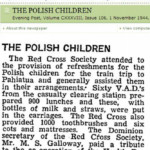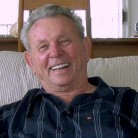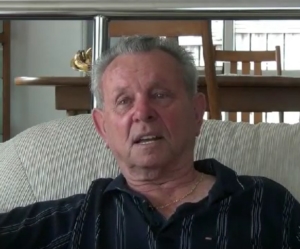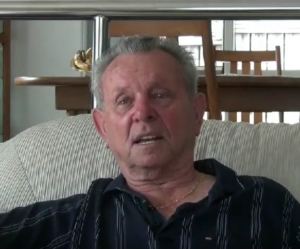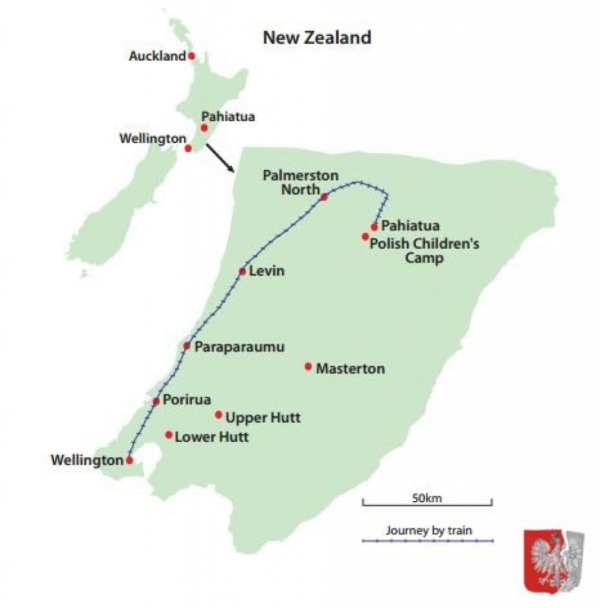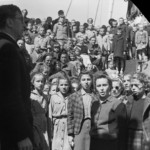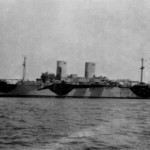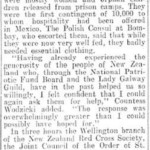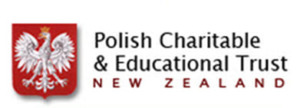Polish Refugees in New Zealand 1944-1951
Exhibitions
Arrival in New Zealand

NZ Prime Minister Peter Fraser with Countess Maria Wodzicka (wife of Polish Consul General in NZ) welcome the Polish children and adults on the board the ship the US General Randall disembarking in Wellington on 1st November 1944. Source: Disk 34442 – Reference No.: F- 3634-1/2 Photographer: John Dobree Pascoe From the John Pascoe Collection, Alexander Turnbull Library, Wellington, NZ. Permission of the Alexander Turnbull Library must be obtained before any reuse of this image.
Krystyna Skwarko: After a month of sea travel we sailed into Wellington harbour on November 1, 1944. The sun burst through the clouds and shone on the new country.
Everybody tried to squeeze in as near to the rails as possible to get a better view. We saw masses of tiny, colourful houses perched on the green hills surrounding the harbour with the taller buildings of the city lower down on the flat.
After the dry, barren and yellow countryside of Persia, New Zealand appeared a real fairyland. (p51)
… In the afternoon of our arrival there was a loud welcoming whistle from the Polish ship Narwik which was anchored in Wellington at the time.
The following day there was a surprise awaiting us at the Wellington Railway Station. There were hundreds of smiling Wellington school children waving New Zealand and Polish flags as a gesture of welcome on the platform from which we were to leave for Pahiatua. The singing of the national anthems and gifts of flowers made the occasion even more moving. It was the first direct contact between the children of the two nations. A brief meeting which was to change into a deep and lasting friendship over the years.
There was another big, friendly welcome at Palmerston North, and all down the line, even at places where the train did not stop, there were groups of children gaily waving flags and handkerchiefs.
We had a final welcome on the platform of Pahiatua Station. Then the New Zealand soldiers helped us onto some army trucks and took us to our new home.
The official name at the entrance, “Polish Children’s Camp in Pahiatua”, cheered our hearts enormously. A place of our own in a distant land.
We were met at the gate by the Camp Commandant, Major P. Foxley, Count and Countess Wodzicki and their two children. (p52)
… As soon as we arrived, we divided the children into age groups and sent them with their supervisors to the various dormitories. There they found the beds neatly made up, a mat beside each bed, and even flowers on the tallboys. All this work-it was not an easy task to prepare more than 700 beds was done by the women of the Pahiatua Red Cross Society, with Mrs J. Tuckwell-Herbert (Wairarapa Centre) as commandant, the late Mr D.C. Pryor as president, Miss Marion Tylee, secretary, Mrs H. Hickman, treasurer, Mrs M. Guy, Pahiatua commandant of the V.A.D., Mesdames S.K. Siddels and A.W. Bisset in charge of sewing, Mrs E. Sinclair, Red Cross transport commandant and Mrs A.A. Vaughan, junior Red Cross.
The Red Cross organised the preparation of the dormitories but invited all other women’s groups such as the Country Women’s Institute, the Women’s Division of Federated Farmers, and Guide groups to help them. These were split up into teams which were each led by a trained Red Cross Volunteer Auxiliary. The older women arranged dozens and dozens of posies for each tallboy and the dining tables. (p54-56)
… After making sure that each child had been assigned to a bed the supervisors took their groups to the dining halls for their first meal in the camp. The army cooks had prepared an excellent dinner. The tables were decorated with flowers and everything looked clean and tidy.
The cottages which had three small rooms and a bathroom, had not only their own furniture and bedding but everything necessary for daily living.
That first evening our meals were brought to us by the friendly members of the New Zealand Women’s Army Corps. (p56)
… We were greatly helped in finding our way round the camp by the Wodzicki’s two children, Monika and Jontek. As none of us could speak English fluently, they served as interpreters and guides round the large camp, always ready to assist anyone.
From the very beginning of our arrival we were surrounded with an almost astonishing kindness and courtesy.
The following day the Delegate of the Polish Ministry of Education and Social Welfare in London, Mr J. Sledzinski, arrived by plane. He was to be responsible for the children’s education and welfare.
At a meeting of the existing heads of schools, teachers and supervisors that evening, Mr Sledzinski told us about the appointments made in the administration, health resort, educational personnel and supervisors.
The following day we had a good look at our new surroundings. The children were overjoyed with all the open space. They rushed around, played games, explored every corner and generally had lots of fun. (p58)
The Invited; p51, 52, 54-56, 56, 58
Voices
Testimonies
Maps
Photos
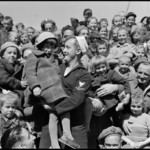
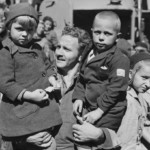
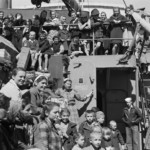
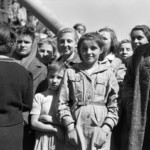


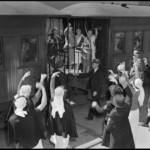
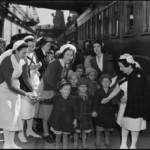
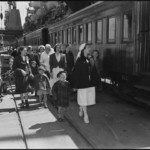
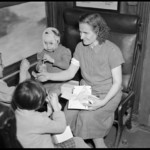
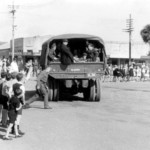



Documents
